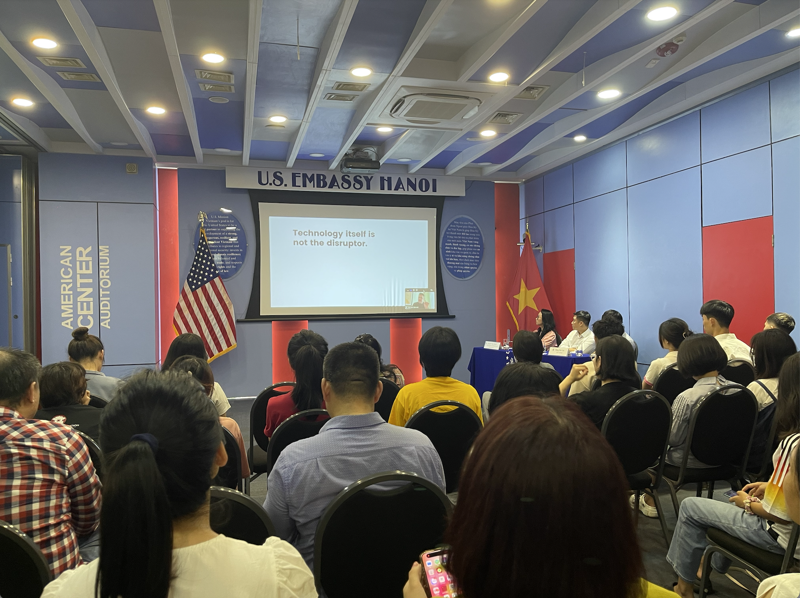On June 14, the American Center (U.S. Embassy in Vietnam) held the seminar "Application of AI in communications" in Hanoi and Ho Chi Minh City.
At the seminar, discussion was focused on the impact of AI on the media industry, from automated content creation to data-driven insights, as well as its ability to shape the future of journalism.
AI is currently a huge technology and is being provided for free or at low costs, according to Mr. Rishad Patel, co-founder of Splice Media. This technology can support newspaper offices in understanding the real needs of readers to offer suitable products.
"The future of journalism is not AI, nor content," he said. "AI is also really important but more important is how to use it better. The future of journalism is user-centric, built by AI, based on user preferences and user needs."
Mr. Tran Vu Nguyen, Chairman of Asia Innovative Education Group shared that currently there are many AI software such as Chat GPT, Poe, Ask Search,... AI tools, especially generative AI, are being widely applied in the field of journalism and media, such as content production, checking the authenticity of video content, graphic design, and images.
"AI is being used a lot at work and in many fields," he affirmed. "Many AI applications will appear in communications day by day. It is important to use tools in the best way to serve human work."
However, AI still contains many risks that have not been fully overcome.
Mr. Dang Pham Thien Duy, Senior Lecturer, RMIT University, said that in Vietnam, most AI applications are still in a narrow scope, mainly used to perform specialized tasks.
He also pointed out that many AI-provided content is inaccurate, users must always double-check to ensure the accuracy of the information. AI-generated articles are often not collected by Google, leading to limited traffic for the product. Moreover, the AI application will collect data to analyze data and determine search needs, thereby providing the information that users need. However, this can cause personal data to leak and privacy to be affected.
"Businesses should approach AI and immediately consider related factors, such as advantages and disadvantages, required resources, regulations, ethical issues and applications, to prepare for the AI wave," Mr. Duy said. "To ensure information transparency, newspaper offices and journalists need to acknowledge that we have used AI with readers if they use this technology in articles."
According to Mr. Dang Hai Loc, CEO & CTO of AIV Group, there are currently no measures to limit AI tools from providing false information, or the information accuracy is not high, especially the issue of "AI illusion".
Besides, tools to verify the authenticity of AI information are still not popular. Meanwhile, there are not many tools to distinguish between human-made content and AI-generated content. This raises the issue of transparency rules in journalism and communication about products created by AI.
Accordingly, Mr. Loc also offered a number of solutions, including that when newspaper offices and journalists use illustrations, they need to note that the image was created by AI. On social media platforms, content that uses AI also needs to be clearly labeled.
"Sometimes AI has misleading information that seems extremely convincing," Mr. Loc emphasized. "There are cases that AI creates data and cites events that do not exist in reality. To verify this information, technically there are startups in the world with products to verify content, products created by AI. In the 4.0 era, it is necessary to cooperate and build a proven data set."
According to Mr. Nguyen, currently, many applications have been developed in the world to check the authenticity of content or photos to see whether they are products of AI or not. There are about 20 applications on the market that can help check fake news.
"As more and more information becomes available, readers will seek out higher quality sources of information," he said. "Therefore, every journalist will become an expert, which is something AI cannot do."









 Google translate
Google translate